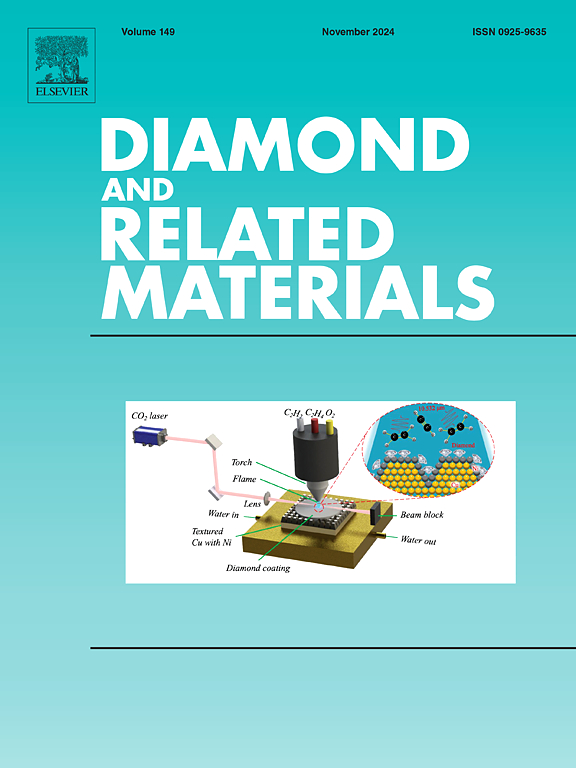PANI/FeS2/HPBC composite with cladding structure for high specific capacitance electrode in supercapacitors
IF 4.3
3区 材料科学
Q2 MATERIALS SCIENCE, COATINGS & FILMS
引用次数: 0
Abstract
The integration of carbon-based materials with pseudocapacitive components represents an effective strategy for developing high-performance composite electrode materials. In this study, Sunflower straw-derived carbon (HPBC) with a hollow porous structure is developed and used as a conductive substrate for composites. HPBC provides enough space for the growth of redox-active substances. Subsequently, the solution oxidation method is utilized to synthesize PANI/FeS2/HPBC composite with a cladding structure. Electrochemical characterization reveals that the HPBC framework not only improves charge transport through enhanced conductivity but also stabilizes redox-active species, whereas the synergistic redox activity of FeS2 and PANI delivers exceptional pseudocapacitance. Specifically, the PANI/FeS2/HPBC composite demonstrates a superior specific capacitance of 2242.4 F g−1 at 1 A g−1, along with outstanding cycling stability evidenced by 85.3 % capacitance retention at 10 A g−1 after 10,000 cycles. The assembled ASC displays an exceptional energy density of 32.44 Wh kg−1 while delivering a power density of 800 W kg−1. Moreover, the ASC has an impressive cycle life, sustaining 85 % capacity retention after 5000 cycles at 10 A g−1. The developed PANI/FeS2/HPBC composite demonstrates promising prospects for supercapacitor electrode materials, with the sunflower straw-derived hollow porous carbon (HPBC) serving as an excellent substrate for composite fabrication.

具有包层结构的聚苯胺/FeS2/HPBC复合材料用于超级电容器高比电容电极
碳基材料与伪电容元件的集成是开发高性能复合电极材料的有效策略。在本研究中,开发了具有中空多孔结构的向日葵秸秆衍生碳(HPBC)并将其用作复合材料的导电基板。HPBC为氧化还原活性物质的生长提供了足够的空间。随后,采用溶液氧化法制备了具有包层结构的PANI/FeS2/HPBC复合材料。电化学表征表明,HPBC框架不仅通过增强电导率改善电荷传输,而且还稳定了氧化还原活性物质,而FeS2和PANI的协同氧化还原活性提供了优异的赝电容。具体而言,PANI/FeS2/HPBC复合材料在1 a g−1时具有2242.4 F g−1的优越比电容,以及出色的循环稳定性,在10 a g−1下,经过10,000次循环后,电容保持率为85.3%。组装后的ASC具有32.44 Wh kg−1的能量密度和800 W kg−1的功率密度。此外,ASC具有令人印象深刻的循环寿命,在10 A g−1下循环5000次后保持85%的容量保留。PANI/FeS2/HPBC复合材料作为超级电容器电极材料具有良好的应用前景,其中向日葵秸秆衍生的中空多孔碳(HPBC)是一种极好的复合材料衬底。
本文章由计算机程序翻译,如有差异,请以英文原文为准。
求助全文
约1分钟内获得全文
求助全文
来源期刊

Diamond and Related Materials
工程技术-材料科学:综合
CiteScore
6.00
自引率
14.60%
发文量
702
审稿时长
2.1 months
期刊介绍:
DRM is a leading international journal that publishes new fundamental and applied research on all forms of diamond, the integration of diamond with other advanced materials and development of technologies exploiting diamond. The synthesis, characterization and processing of single crystal diamond, polycrystalline films, nanodiamond powders and heterostructures with other advanced materials are encouraged topics for technical and review articles. In addition to diamond, the journal publishes manuscripts on the synthesis, characterization and application of other related materials including diamond-like carbons, carbon nanotubes, graphene, and boron and carbon nitrides. Articles are sought on the chemical functionalization of diamond and related materials as well as their use in electrochemistry, energy storage and conversion, chemical and biological sensing, imaging, thermal management, photonic and quantum applications, electron emission and electronic devices.
The International Conference on Diamond and Carbon Materials has evolved into the largest and most well attended forum in the field of diamond, providing a forum to showcase the latest results in the science and technology of diamond and other carbon materials such as carbon nanotubes, graphene, and diamond-like carbon. Run annually in association with Diamond and Related Materials the conference provides junior and established researchers the opportunity to exchange the latest results ranging from fundamental physical and chemical concepts to applied research focusing on the next generation carbon-based devices.
 求助内容:
求助内容: 应助结果提醒方式:
应助结果提醒方式:


